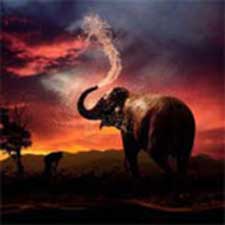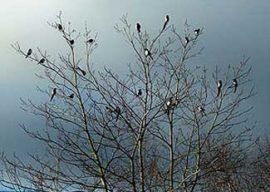I was in the third row surrounded by fellow zoology and biology students. We were listening to Professor Garrett Hardin lecture about conscious awareness in animals. He said something to the effect that there was no scientific evidence that animals other than humans truly are conscious or have compassion for each other. He went on to say that animal behavior that looks like caring is really instinct – like maternal protection of an animal’s young. Or it is anthropomorphism – putting human qualities on animals. I listened. Dr. Hardin ended by saying that there was some evidence, however, that elephants may exhibit some true altruistic behavior when they are seen helping each other, etc. I looked up from my note taking and felt an instant shift. A door opening. Isn’t altruism or ‘unselfish concern for others’ perilously close to caring and being conscious? But what did I know? I was only a 20 year old college student.
For the next 50 years I’ve been unconsciously collecting the research and personal data to support the idea that true caring, true consciousness exists among our fellow animals – perhaps even in ‘lower animals’ i.e. invertebrates. A particular praying mantis comes to mind. But to think that humans would include other animals in any definition of consciousness was almost too much to hope for in a world that focuses on separating ourselves from others rather than uniting. We seem bent on putting ‘others’ as lower than ourselves.
And then an amazing thing happened. At the conclusion of an International Consciousness Convention in Cambridge, UK on July 7, 2012 a most significant document was drafted and signed by the attendees. This group of internationally recognized cognitive neuroscientists, computational neuroscientists, neuroanatomists, neuropharmacologists and neurophysiologists signed the Cambridge Declaration on Consciousness in Non-Human Animals in the presence of Stephen Hocking.
http://fcmconference.org/img/CambridgeDeclarationOnConsciousness.pdf
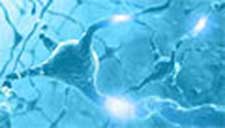 It stated that humans are not unique in possessing consciousness.
It stated that humans are not unique in possessing consciousness.
“The weight of evidence indicates that humans are not unique in possessing the neurological substrates (organized nerve systems) that generate consciousness,” the scientists wrote. “Non-human animals, including all mammals and birds, and many other creatures, including octopuses, also possess these neurological substrates.”
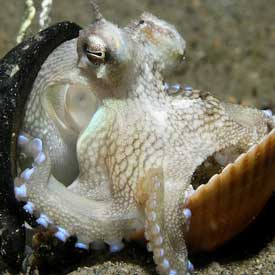 Octopuses? My heart skipped a beat. The octopus, as an invertebrate is definitely a ‘lower’ animal. Most would say it is also way down the evolutionary ladder. Yet this animal with its advanced nervous system has satisfied the basic tests of consciousness according to scientific criteria. It has proved it can plan, learn and use tools. It might even be able to vote.
Octopuses? My heart skipped a beat. The octopus, as an invertebrate is definitely a ‘lower’ animal. Most would say it is also way down the evolutionary ladder. Yet this animal with its advanced nervous system has satisfied the basic tests of consciousness according to scientific criteria. It has proved it can plan, learn and use tools. It might even be able to vote.
Just so we understand what we’re talking about, here is a brief review of animal hierarchy in terms of scientific classification. Those marked in blue are currently said to possess ‘consciousness’ and you can see why the octopus is a surprise. Its closest relatives are the squid and nautilus but it is also related to the snail and the clam.
Animal Kingdom Classification VERY SIMPLIFIED, but pertinent and in alphabetical order to not imply hierarchy
VERTEBRATES – animals with backbones
- Amphibians – animals with soft, damp skin: frogs, salamanders, toads, etc.
- Birds – animals with feathers: chickens, crows, hawks, parrots, magpies, pigeons, tanagers, etc.
- Fish – animals with scales and fins: bass, groupers, goldfish, sharks, etc.
- Mammals – those that have hair and mammary glands. apes, dolphins, elephants, humans, rats, squirrels, etc.
- Reptiles – animals with scales: crocodiles, lizards, snakes, etc.
INVERTEBRATES animals without backbones. Often with exo-skeletons (exterior skeletons)
- Annelids – no legs: worms, etc
- Arthropods – jointed legs: crabs, insects, spiders, etc.
- Cnidarians – often radial and/or free floating: jellyfish, sea anemones, starfish, etc.
- Molluscs – soft bodied, sometimes with a shell: clam, nautilus, octopus, snail, squid, etc.
- Protozoa – microscopic, one celled animals: amoeba, etc.
All this really shows is that we are still at the frontier in terms of adequately understanding consciousness as it relates to the animal world. We haven’t agreed on a definition of consciousness even as it relates to humans. Every discipline thinks about it differently. Philosophers, Psychologists, Religious Scholars as well as Scientists have debated and even avoided debates and definitions for centuries.
Maybe it is up to us to define it for ourselves. Most people have an intuitive idea about what consciousness means to them, but find difficulty ascribing it to ‘non-humans’. It is as if we don’t really know what consciousness means but we know that only humans have it. Our only proof appears to reside in our imagining that another conscious being must be very similar to us in order to have it, which effectively places us humans on top of the hierarchy. Even if we enthusiastically include our dog or cat in the conscious group, most of us would still not include a grackle or a rat. Or an octopus unless we’ve had personal experiences that raise the questions.
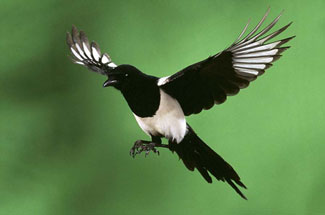 Many animal consciousness researchers dismiss personal stories by lay people as anecdotal because of lay people’s lack of formal training, documentation and over interpretation. Still it is the persistence of the stories that collectively have made an impact and continue to stimulate scientific exploration.
Many animal consciousness researchers dismiss personal stories by lay people as anecdotal because of lay people’s lack of formal training, documentation and over interpretation. Still it is the persistence of the stories that collectively have made an impact and continue to stimulate scientific exploration.
I certainly wasn’t thinking about anecdotes or stories when I stumbled into my own memorable experience on a cold November morning in New Mexico, 1995. I walked out to my pigeon loft as part of my early morning chores. Opening the flight doors for each of the two lofts (partitioned rooms filled with roosts and nest boxes) I loved watching my 20-30 pigeons scrambling through the openings to fly out into the frigid air. For a few minutes I followed their graceful circling as they flew in higher and wider circles. One by one more pigeons left the loft and joined the others – swooping and climbing, now nearly out of sight. I continued the morning feeding routine by placing fresh pellets and water in each now empty loft and then looked in on the nest boxes to check on eggs and chicks. Just as I was finishing, I heard distinct magpie cries, which sounded alarming. I recognized the cries because there were about 6 or 7 magpies in the area who would occasionally join my pigeon flock to perch on the studio roof . They didn’t compete and didn’t seem to interact. They simply joined. I walked out of the loft and looked up to see around 20-25 magpies flying overhead and toward the neighboring field, just beyond the 6 ft wood fence. I had never seen a flock of magpies this large flying together. I walked over to the fence hoping to find a place where I could see what they were flying to. Just then I heard distinctive crow calls and noticed at least a dozen crows flying overhead in the same direction as the magpies. I was definitely curious as I hadn’t ever seen larger groups of either magpies or crows and never before together. Finding a knothole in the fence I peered into the field to see the object of their apparent attention. A Cooper’s Hawk had captured one of my white pigeons and stood over it on the ground. I couldn’t see whether my pigeon was alive still or had already been killed with a swift puncture of its breast. There was nothing I could do but watch. The crows and magpies in the alder trees nearby began screaming and calling loudly in unison and the hawk seemed to look up at them to watch just as I was. After several minutes all the crow and magpie noise stopped. All at once. I looked back at the hawk over the pigeon to see if something had changed but there was nothing I could discern. Perhaps it was the moment of death? Perhaps it was something else I couldn’t see or hear. After several minutes I noticed that the magpies and crows were leaving, one by one. Some flew toward the big cottonwood trees. Some flew in other directions. The alder branches were again bare. The hawk began its process of eating the pigeon while I turned away. I looked up at the pigeon’s flock mates still flying together high in the New Mexico sky seemingly oblivious.
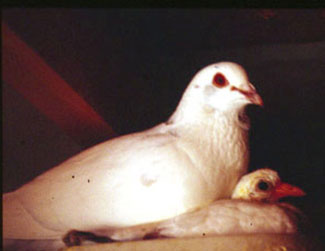 I was left with a strange feeling that I had witnessed something rare, personal, and private. My feelings were mixed – sadness for the pigeon and for its mate that would have to raise any chicks alone. I also felt a calm triumph for the hawk, easing its hunger and perhaps sharing some with its chicks. I couldn’t figure out what might be going on with the crows and magpies. Mostly I felt privileged to be a witness to what appeared to be a voiced outrage and solemn marking of the death of another.
I was left with a strange feeling that I had witnessed something rare, personal, and private. My feelings were mixed – sadness for the pigeon and for its mate that would have to raise any chicks alone. I also felt a calm triumph for the hawk, easing its hunger and perhaps sharing some with its chicks. I couldn’t figure out what might be going on with the crows and magpies. Mostly I felt privileged to be a witness to what appeared to be a voiced outrage and solemn marking of the death of another.
Birds, according to the Cambridge Conference on Consciousness in Non-Human Animals are conscious. My observations and other anecdotal accounts of magpies and crows participating in grieving ceremonies for a fellow dead comrade suggests much more.
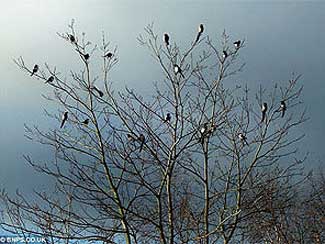
- How did all the magpies and crows know about the pigeon and hawk?
- Even if a few witnessed it, how did all the others find out?
- Why did they all suddenly congregate in the alder trees next to the killing field?
- What was the shrieking about?
- What made them all stop shrieking at the same instant?
- Why did they come together over the death of a bird of another species – a pigeon?
- Was there some kind of greater interconnectedness we don’t yet understand? Had I witnessed not merely conscious behavior, but something much greater?
A few months later I heard about the grieving elephants in Thula Thula.
Stay tuned for Part II as I continue down the rabbit hole…..
